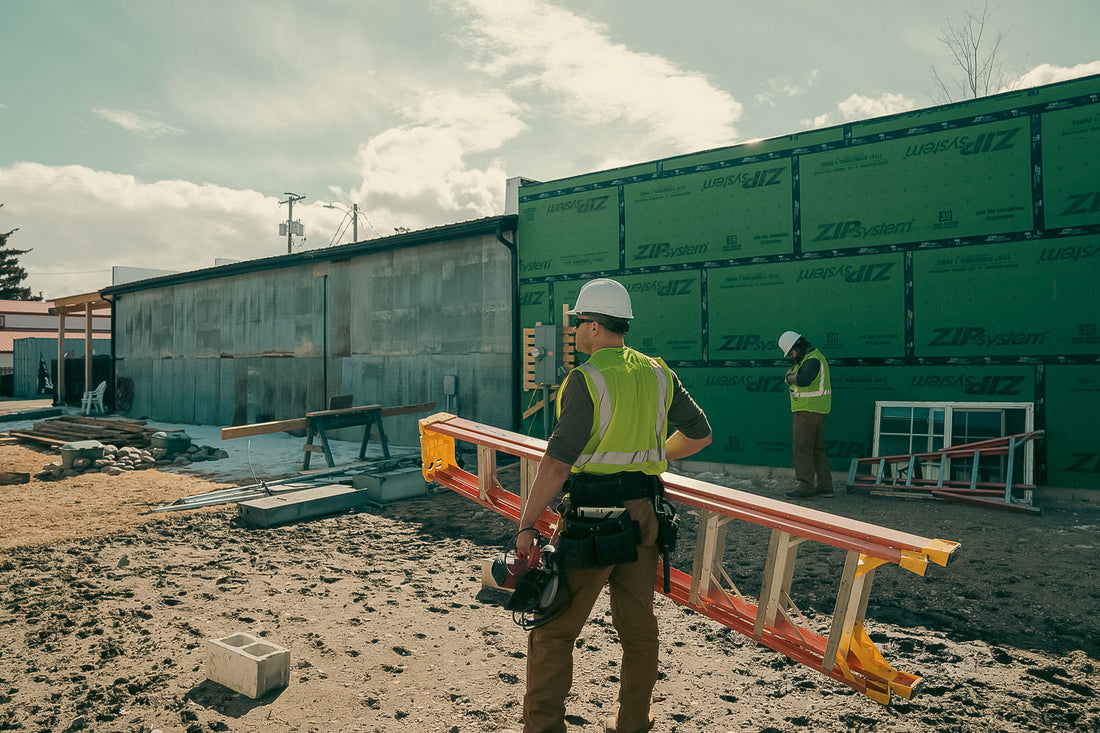A major contributor to both fatal and nonfatal injuries on the job, most slips, trips and falls are avoidable with proper education and specific preventative measures.
According to the Bureau of Labor Statistics, there were 1,102 fatal injuries in the construction industry in 2019. Of these, 418 fatalities (or 37.9% of the total) were related to slips, trips or falls. This represents a 22.9% increase when compared to 2018. Most fatal falls were to a lower level.
And according to the Centers for Disease Control and Prevention (CDC), as well as the National Institute for Occupational Safety and Health (NIOSH), 18% of the 1,176,340 nonfatal work injuries across all industries that required days away from work during 2020 were related to slips, trips or falls.
The reality is, you don’t need to read the sobering statistics surrounding these accidents to realize the potential that slips, trips and falls hold for serious bodily injury or even death. And it doesn’t take much to minimize (or even eliminate) the risk at work and at home.

Preventing Slips, Trips and Falls at Work
- Keep it clean: Good housekeeping practices will keep your workspace or job site clear of the clutter that can cause trips and make it harder (if not impossible) to safely set up a ladder. Simple organization and housekeeping are the fastest, cheapest and easiest ways to prevent slips, trips and falls at work.
- Keep it bright: Dimly lit spaces conceal tripping hazards. Keep your work area well lit, while ensuring all egress routes are always lighted.
- Keep it dry: Wet floors are a slipping hazard. Clean wet floors quickly and use warning signs or mats to indicate hazardous and slippery areas.
- Keep mats and rugs flat: Use non-slip backing or adhesive tape to keep rugs and mats flat on the ground and free from snagging any unsuspecting passers-by.
-
Keep safe on ladders: According to the CDC, 43% of fatal falls in the last decade have involved a ladder. The importance of proper ladder use can’t be overstated. Here are three quick tips to keep safe on ladders, but for a more in-depth review, read this blog from the National Safety Council.
- Choose the right ladder for the job, ensuring it’s tall enough for the task.
- Maintain three points of contact with the ladder when climbing.
- Ensure others around the area understand where the ladder is and give it enough room to not contact it with machinery or other items that could knock it off balance.
Preventing Slips, Trips and Falls at Home
Stumbling over a Lego in a dark hallway, falling off an improperly-placed stepladder or tripping down the stairs are, unfortunately, all too common accidents at home.
In fact, more than 8 million emergency department visits in 2017 were related to falls. Many of these accidents occurred at home, not the workplace.
And the risk of falling only increases as you get older. One in three people over the age of 65 in the U.S. will experience a fall. And in 2005, more than 15,000 people over 65 died as a result of a fall, according to the CDC. For those over 85, falls are the leading cause of injury-related death.
Considering these sobering statistics, taking measures to prevent the risk of falling at home can truly save lives.
Many of the tips for preventing slips, trips and falls at work can apply at home too, such as cleaning up messes quickly and basic housekeeping practices. But there are some house-specific things that can be done to make home a safer place.
- Repair or replace damaged flooring: Loose floorboards, tiles or carpet edges are a recipe for disaster, especially those near, or on, stairs. Secure loose flooring to prevent these tripping hazards.
- Install handrails where needed: Hey, everyone loses balance sometimes! But there are some places that a slight bobble can be disastrous (like the stairs or the shower). Ensuring there are secure handrails to grab in these split moments can be the difference between a hospital visit and saying “Wow, that was close!”
- Secure cables: Living in a digital world comes with its own set of safety hazards. Charging cables, power cords and other wires are everywhere in the modern home. And all of these can pose a tripping hazard. Tidy up all those errant cables with ties, straps or tape designed for electrical use.
- Practice proper storage: Keep frequently-used items within reach to avoid the overreaching that can lead to slips or the need to use a ladder.
- Use step stools and ladders properly: Only use step stools and ladders if they are in good working condition. Only place them on flat, level ground. And maintain three points of contact when climbing a ladder at all times.
- Put down your phone(!): Don’t use your phone while walking around your home (or workplace). The distraction can lead to tripping over objects, slipping on slippery surfaces or falling down the stairs. Studies have shown that using the phone can alter the way people climb and descent stairs, indicating an increase in risk (probably unsurprisingly).
- Stay active: Maintaining fitness reduces the risk of falls and decreases the likelihood of serious injury when accidents do happen. Better balance and more agility typically come with regular physical activity.
Reducing the risk of all-too-common slips, trips and falls comes down to taking some simple preventative measures and using climbing tools properly. Don’t be part of the 8 million people a year who end up in hospital rooms due to these common injuries. Take action today at work and at home to minimize the risk of slips, trips and falls.

